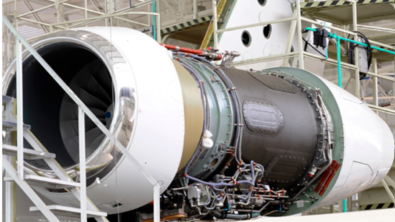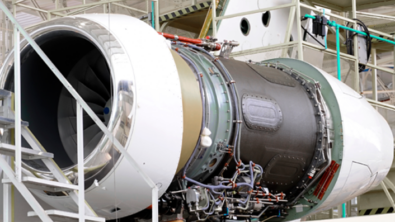Podcast: Market intelligence for aerospace supply chain management

Aerospace supply chain disruptions are creating big problems for companies, even years out from the turmoil caused by the COVID-19 pandemic. It’s clear that existing risk management approaches are no longer viable in today’s environment.
Todd Tuthill, vice president for aerospace and defense strategy at Siemens Digital Industries Software, recently recorded a podcast with Aviation Week columnist William Garvey and Ryan Chan, vice president of solutions consulting at Supplyframe, to discuss how investing in digital transformation, and particularly market intelligence, can help with aerospace supply chain management.
Check out a short excerpt of the podcast transcript below. To hear the full conversation, head over to Aviation Week’s website.
This excerpt has been lightly edited for clarity.
William Garvey: Welcome. I’m William Garvey, a columnist for Aviation Week and Space Technology magazine. I’ll serve as moderator for today’s podcast regarding supply chain issues in the aerospace and defense industry. An online survey of A&D manufacturers and suppliers was conducted this past summer by the aviation network. The survey was sponsored by Siemens and here to help interpret those responses, project probable consequences, then suggest better ways forward is Todd Tuthill, vice president for aerospace and defense strategy at Siemens Digital Industry Software, and Ryan Chan, vice president of solutions consulting at Supplyframe, a Siemens company. Good day to you, gentlemen.
Todd Tuthill: Hello. Hey, William. Good day to you too. It’s great to be here with you and Ryan to talk about this really important topic.
William Garvey: It is very important and Todd, to begin, generally it seems that product availability and consumer demand have pretty much found balance after the disruptions at the height of the pandemic. So what prompted Siemens to underwrite this recent A&D survey?
Todd Tuthill: That’s a great, great place to start. So I want us all to think back in our lives. It’ll be a little painful, maybe, but think back to the pandemic in the summer of 2020 and all the things that were on our minds then. We were all thinking about, of all things, toilet paper, right? Do we have enough toilet paper? The supply chain was in crisis, and you know, you think about Christmas of 2020. Christmas of 2020 almost didn’t happen because of all the boats stuck in the harbor. They couldn’t get into Long Beach. So as you said, in a lot of sectors and a lot of parts of our economy, those issues have kind of gone away. So we ask ourselves, how is aerospace doing? Is aerospace doing well? Are there still supply chain issues in aerospace? So we decided to sponsor a survey this past summer to see how aerospace companies are doing with respect to their supply chain and getting all the parts they need to build all these great innovative products. So that’s why we sponsored.
William Garvey: Very good. And it was well-timed because just even right now, even though air traffic is coming back, a lot of airlines have their airplanes grounded because they can’t get their engines inspected. And I know that in the oil and gas industry, the offshore industry, the helicopters serving them, a lot of those are grounded because they can’t get the parts they need. So it continues very much in the aerospace and supply industry. Todd, as you know from the survey, 84% of respondents reported supply chain issues caused late deliveries to customers. Why is this number so high?
Todd Tuthill: Yeah, that number was shocking to me, quite frankly, because I would have thought in this day and age if I put a group of people together and ask them all a question, the odds of 84% of them answering the same way, and regardless the topic, would be pretty incredible. So this really indicates, you know, that supply chains haven’t recovered in aerospace. And I think it’s a combination of several things. The market for aerospace products has just exploded as you say. You know, the air traffic kind of went down after the pandemic, most airplanes were grounded. A lot of that’s recovering now. A lot of airlines around the world are buying new products. There’s a big backlog, there are global tensions, you know, all over the world right now in a big appetite for defense. Products, as well as the demand for aerospace products, has really never been greater than it is right now, and you add to that the fact that this big global disruption in supply chain, you know, was followed by the great resignation and you add all those factors together, and you end up with an industry still really looking to solve a lot of its supply chain issues. You mentioned the 84% number. There was another really striking number that came out of that survey, and we asked companies, you know, after we asked them about supply chain issues, we said, “Ok, tell us about looking into the future. When these supply chain issues happen, were you surprised? Or did you see them coming?” And two-thirds of the respondents said, “Wow, you know, either we had no warning or very little warning,” and they were very reactionary, and you say, “Why is that happening?” And I think it’s a little bit like a situation where you’re trying to drive your car while looking in the rearview mirror. And as we look at that, I think a lot of these companies, you know, their supply chains are disrupted. They can’t do, you know, almost 90% of them can’t deliver products. They’re saying, “What do we do?” And companies start to look at things like their bill of materials. They look at the backlog of their orders. They look at their traditional, you know, PO to delivery dates, and they try to say, “Ok, what? What does that mean about the future?” The problem is the supply chain issues these companies have weren’t created inside their company, and when they’re just looking inside their company to fix it, they’re not going to be able to do that. They’re going to be surprised, and I think that’s the, again part of why we’re seeing such a large number of late deliveries anyway and also part of why two-thirds are saying they’re surprised. So again, we saw some trends I thought we’d see. We saw numbers larger than I think we expected to see.
To get more insights on the challenges the industry is facing and what solutions Tuthill and Chan suggest for effective aerospace supply chain management, listen to the full podcast on Aviation Week’s website.


